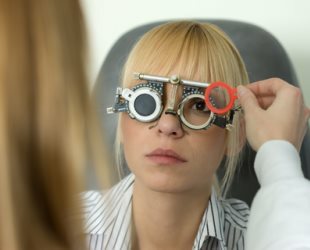
Amblyopia is a disease of the eyes, especially common in children.
But the adult part of our country in the amount of 1-2% also suffers from this disease( due to various damage to the visual organs).
In another way it is called a "lazy eye", which reflects the essence of the phenomenon - the eye does not work in full.
The optical system of the eye does not form a clear picture, and the brain does not receive accurate information about the visible objects.
The earlier treatment is started( especially children), the better the result, up to the complete disappearance of the disease.
- 1. What is an
- 2. Types and causes of the disease
- 3. Therapeutic strategy
- 4. Forecast
- 5. Important advice
What is this
This functional vision reduction due to the non-participation of one eye in the visualprocess. Each eye observes its own picture, different from the picture of the other eye. The brain can not combine these images into one. As a result, the work of one of the eyes is suppressed.
Persons with amblyopia do not have binocular vision, that is, a correct comparison of the images of the brain from the two eyes into one whole. This ability of the brain allows you to evaluate:
- order of the location of objects in the visual field,
- image depth,
- integrity of the perceived pattern,
- volume of perception.
All of the above functions are not available in the presence of this disease.
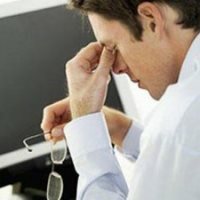
Detailed instructions on what to do if your eyes hurt from the computer? Description of the proper prevention and treatment of the disease.
In the article( here) about the nature of people possessing green eyes.
Species and causes of the disease
Strabismus and amblyopia
For all the variety of reasons for a lazy eye, strabismus is the most common. His consequence is amblyopia. But they are interrelated. Sometimes amblyopia leads to strabismus.
This happens when the eye has a very low degree of vision( less than 0.3), and an integral image is not possible. In turn, low visual acuity develops due to changes in the cornea, eye fundus, etc.
This is a dysbinocular amblyopia due to the constant inhibition of vision in the mowing eye. In a state of normal, the muscles around the eyes should work together to simultaneously move both eyes in the same direction. If the muscles can not control this movement, strabismus arises.
Causes of muscle damage or weakness:
- farsightedness,
- mental disorders,
- muscle or eye damage.
No timely correction of vision
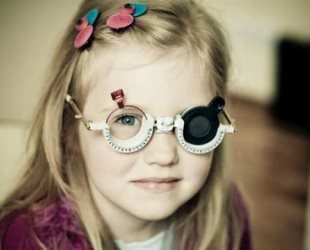
If a person has long ignored the need to correct vision pathologies, he may also develop amblyopia.
This attitude to your vision is expressed in the unwillingness to wear glasses or contact lenses. Sometimes he does not even understand what it means to "see well" or "see badly."
As a result, uncorrected myopia, hyperopia, and increased astigmatism are formed, which are "to blame" in the fuzzy image on the retina. Such amblyopia is called refractive or anisometropic.
Turbulence of the optical medium
There is also deprivational( obscuring) amblyopia. It develops when light does not reach the retina. This phenomenon arises from the opacification of the optical environment of the eye in diseases:
- cataract,
- corneal leukemia,
- gross abnormalities in the vitreous,
- ptosis( descent of the upper eyelid).
Because of these factors appear:
- functional inactivity of the eye,
- development delay of the vision analyzer.
Psychological Causes of
The hysterical appearance of a lazy eye( psychogenic blindness) develops against the background of hysteria, under the influence of psychogenic stimuli. It is characterized by:
- narrowing of the visual field,
- sudden deterioration of visual acuity,
- problems with sensation of color,
- photophobia, etc.
Therapeutic strategy
The lazy eye is treated in several directions:
- strabismus removal,
- suitable defect correction of optics,
- patient trainingeyes.
Treatment of different types of amblyopia
Strabismus is eliminated by a surgical procedure, but vision does not improve from this. Hysterical amblyopia is treated by methods of psychotherapy, sedatives.
Disease of the contagious form is cured promptly:
- at a young age is removed cataract,
- is produced by keratoplasty( corneal replacement).
Correction of amblyopia
Ophthalmologists believe that the correction of a lazy eye in time corrects the disease by 100%.For this, the treatment of children should begin as soon as possible.
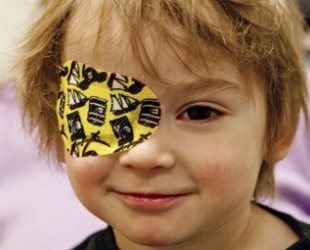
The main method of correction is the use of corrective glasses. Their wearing is enough to heal 70% cases.
For the remaining 30% , occlusions are applied( glued).They sealed a healthy eye, or designate special glasses with a sealed one part.
Contact lenses with an opaque composition or a simple bandage over the eyes are also used. Thus, the diseased eye receives a visual load.
This method increases his visual acuity. As a result, both eyes align the quality of the projection on the retina, and they begin to see equally.
Occlusion should be worn every day for 3-4 hours. But you can not let a child go with her all day. The duration of treatment by occlusion is determined by the age of the child, the seriousness of the problem, the accuracy of compliance with the instructions of the specialist. But in any case it should not be less than 3 months .
Atropine instead of occlusion
Not all children can make a stain on the eye. This procedure is sometimes embarrassing and annoying. Then, atropine is used in the form of eye drops in order to "tarnish" the picture in a healthy eye. From atropine the pupil expands, there is an indistinctness. Then the lazy eye begins to work more actively.
Compared to sticking, atropine is less noticeable and unpleasant for many children, and the effect is the same. But from it may occur side effects:
- redness of the skin,
- eye irritation,
- headache.
Methods of training
A good result is given by special gymnastics for the eyes, as well as games with precise hit to the target and fine manual mechanics. Effective stimulation of the damaged eye with the help of light flashes, that is, photostimulation.
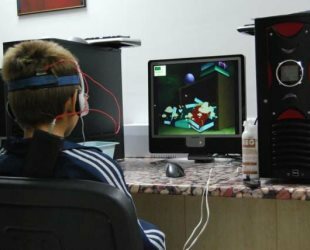
A modern way to train amblyopic eyes is to use the Amblykor apparatus. The operation of the device is based on the method of video computer training.
The patient is viewing a movie or any video material. At this time, the sensors take information about the eyes. In parallel, the encephalogram of the brain is fixed.
The image on the monitor is saved under the condition of "correct" view. But when it becomes indistinct, the picture disappears.
In this way, the device forces the brain to involuntarily reduce periods with non-contrast eyesight. As a result, the work of neurons in the visual cortex is optimized, and vision is greatly improved.
Forecast
Both children's and adult amblyopia is a disease that does not pass by itself. If you do not treat, then loss of vision is inevitable;the disease is constantly progressing. The main factor in the treatment is timeliness. If this factor is taken into account, the eye will restore its full normal functionality.
Pediatric Amblyopia
The prognosis of treatment methods depends on the cause, which was caused by the disease and the time of its detection. The earlier this was done, the more favorable the forecast will be. If a child has a pathology that could lead to amblyopia in the future, then such a pathology must be eliminated. Prevention with this disease gives much better results than treatment of already arisen amblyopia.
In the development of pediatric amblyopia, treatment should be started immediately. This must be done before the age of seven, because it is to this age that the child's eye is fully formed and corresponds to the eye of an adult person according to physiological parameters.
For dysbinocular amblyopia, strabismus should be eliminated, including surgically. But the most unsatisfactory prognosis in obscure amblyopia, therefore, it must be eliminated in infants in the first two months after birth.
Adult amblyopia
Visual improvement in the treatment of amblyopia is possible at any age, even in the elderly. But the positive dynamics will depend on many factors, such as:
- timely diagnosis;
- the cause of amblyopia;
- is a kind of this disease;
- the correct method of treatment;
- compliance with the exact prescriptions of the doctor;
- initial vision.
It should be remembered that the younger the patient, the greater the chances of getting rid of amblyopia. Sometimes the treatment can take more than a year, the main thing is not to give up, but to work hard and comply with all the doctor's recommendations.
Important tips

Read more - the meaning of the brown eyes of men! Description of the nature and main features.
In the article( here) about the causes of ptosis of the upper eyelid.
Treatment of eyelid disease - haljazion!http: //moezrenie.com/bolezni/ zabolevaniya-vek / khalyazion-lechenie.html
To avoid or minimize the problems associated with the lazy eye, you should adhere to the rules:
- Do not forget to visit an ophthalmologist for preventive examinations up to twice a year.
- If you have a child under 5 years of age, even a slight strabismus should be observed regularly with an ophthalmologist.
- Preventive measures for children under a year with strabismus are as follows: next to the child's face, one should not place bright objects, toys should be placed away from him.
- Many experts believe that nutrition and early child development are very important for strengthening vision.
- At the first sign of any ophthalmic disease, you should immediately contact a specialist and immediately begin treatment.
The disease should be identified as early as possible, as it eventually worsens to the full suppression of the visual functions of the diseased eye. An untreated or untreated patient may ultimately lose sight in the diseased eye. And this loss is irreversible.
